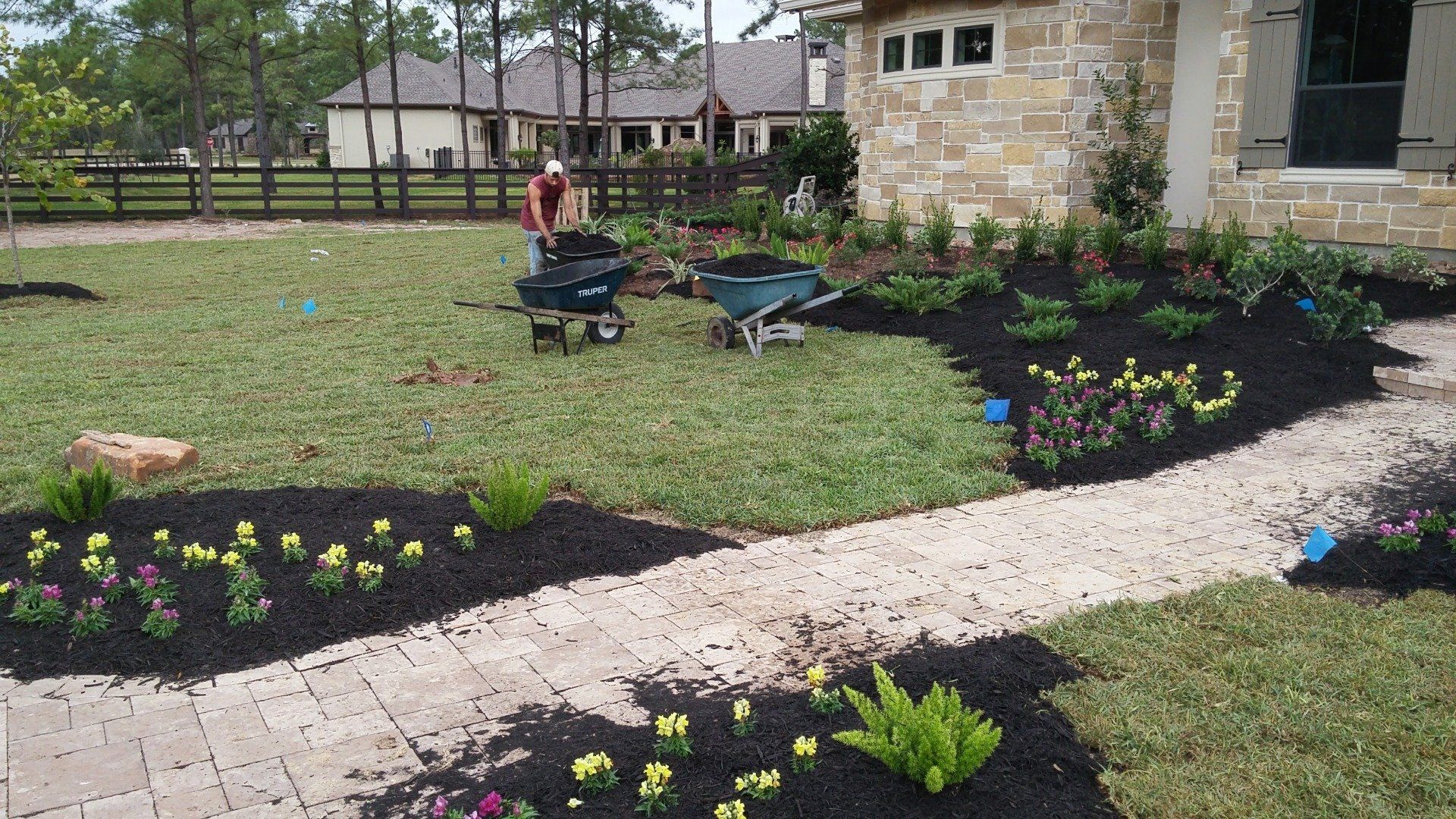Useful Landscaping Terms
September 28, 2022

Residential Landscaping Terms
Terms and Definitions for Residential Lawn Care
If you are thinking about hiring a team to help with your landscaping, then you have probably heard all kinds of terms being thrown around. Without an explanation for certain terms, you may be left in the dark.
Christian Complete wants to answer any questions you have and be a resource for you to learn from. That is why we have compiled a list of common residential lawn care terms.
- Aeration: To allow for water and nutrients to reach the roots of plants, small holes are created in the ground.
- Aggregate: A stone used as footing or for aesthetic appeal, often incorporated in gravel mixtures.
- Annual: In terms of flowers, some kinds bloom annually, or once each year. These are known as annual flowers
- Backfill: Material that fills behind landscape structures, such as retaining walls. This can be gravel, dirt, or other materials.
- Basin: A structure to hold water for any on-site water features
.
- Biennial: Flowers that bloom during two seasons are known as biennial plants.
- Compost: This soil is packed with nutrients from decayed organic matter, such as food scraps. It is used to help improve the quality of soil when planting.
- Drainage: Controlling the flow and direction of water through a property. Methods for drainage solutions can be provided by a landscape professional.
- Enclosure: A fenced-in or walled-in area within the property.
- Flagstone: A general term that is used when describing flat stones of various colors. These are typically used for paths and patios.
- Gazebo: A covered structure to provide shading or a place to gather.
- Germination: Sprouting of a seed.
- Grading: The level of the soil can be altered in order to promote proper drainage throughout the property.
- Hardscape: The structures and non-living features of your property are known as hardscapes. This includes walkways and patios that cannot be altered when planning out lawn care.
- Mortar: A mixture of sand and cement that is commonly used for placing stones.
- Mulch: Bark pieces or compost that are laid around the bottom of plants or in a designated area to provide an aesthetic separation.
- Pavers: Slabs of stone that are utilized in walkways.
- Pergola: An open structure for decoration on a property.
- Perennial: Plants that grow for an extended amount of time, beyond just one season.
- Pesticide: A chemical used to keep bugs and critters away from plants.
- Pruning: Trimming tree limbs and other growth on plants to keep them controlled and maintain an aesthetic appearance.
- Raised Garden Bed: A gardening structure that is elevated off of the ground.
- Retaining Wall: A structure that is inserted in order to provide support for a slope or prevent erosion.
- Site Plan: Before breaking ground with a landscaping project, the plan will first be drawn out. By mapping out any important features, such as walkways, patios, and large trees, you and your landscaper will be able to design the perfect lawn for your residential property.
- Softscape: The elements of a yard that change with seasons, including flowers, mulch, grass, bushes, trees, and soil.
- Soil Test: To understand the pH levels of your soil, a landscaper may conduct this test. This will allow your landscaper to decide what they need to do in order to create an environment where plants can thrive.
- Turf: false grasses installed on a lawn.
- Weeds: Unwanted plants that may take resources from the ones that you want to keep on your property.

